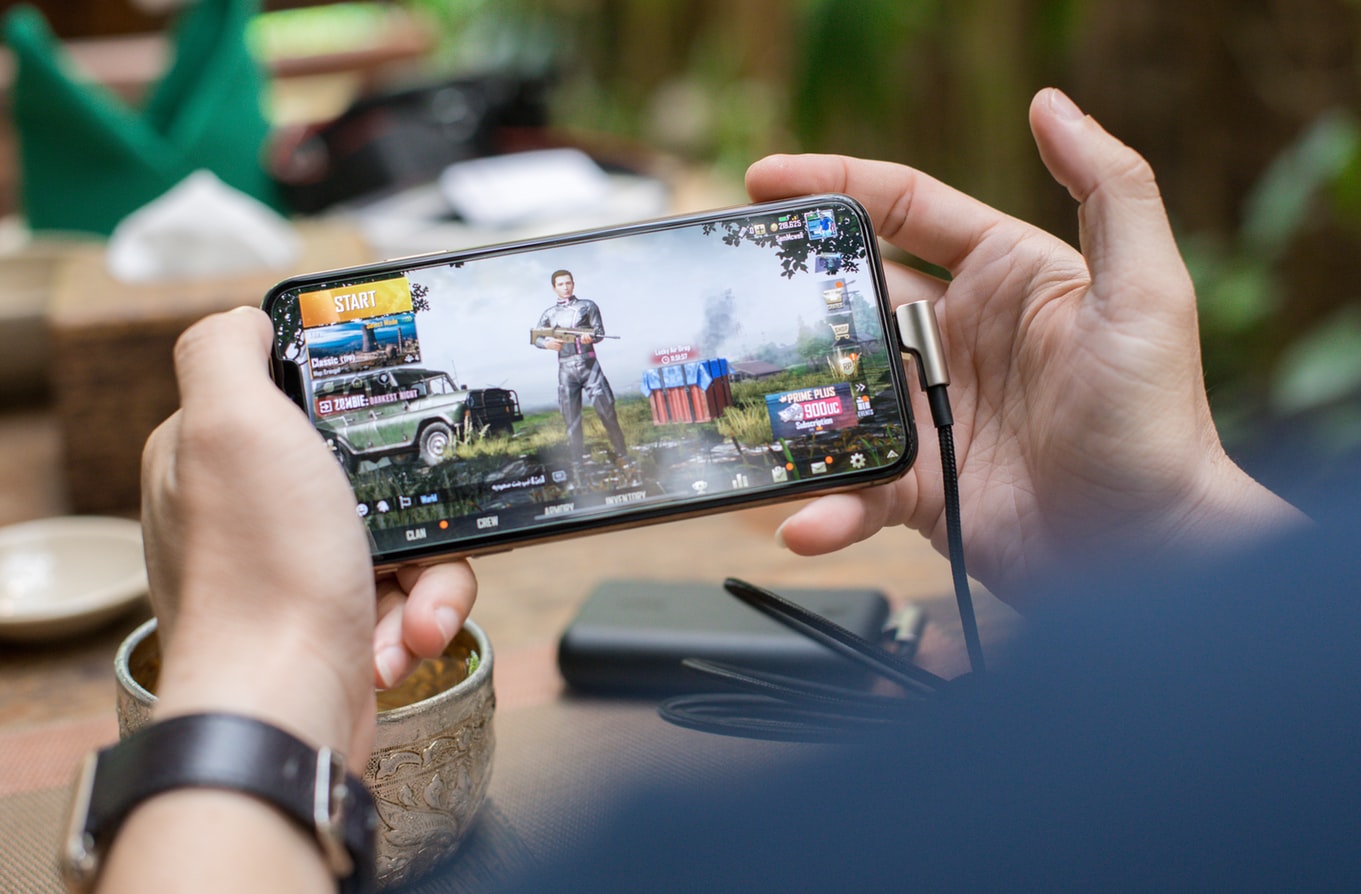In-app purchases allow users to pay real money for features or items while playing a mobile game.
Depending on the game type, that can be anything from extra lives, coins, weapons, unlocking levels, etc.
This option can be introduced at any moment in the game. However, a common practice in mobile gaming is to strategically offer in-app purchases in situations where the player needs assistance.
Written 23/9/2022 by Admin.
Getting something for free simply feels priceless.
For this reason, you’ve decided to create a free to play mobile game.
Now the question is, how to monetize it?
Should you go for in-app purchases, ad revenue, or a hybrid model?
We’re here to help you decide.
In-app purchases are a great idea for a lot of games, but not all. Implemented the right way, an IAP model can create impressive returns.
In this article, we cover all the basic things to know about in-app purchases: what they are, the types, pros/cons, and some numbers.
You will also learn about IAPs across genres, best practices, and from the examples of top-grossing games.
Let’s start.

In-app purchases are one of the most effective monetization strategies in the freemium economy.
How do they work?
In-app purchases allow users to pay real money for features or items while playing a mobile game.
Depending on the game type, that can be anything from extra lives, coins, weapons, unlocking levels, etc.
This option can be introduced at any moment in the game. However, a common practice in mobile gaming is to strategically offer in-app purchases in situations where the player needs assistance.
Stuck on a level for the 10th time? You can buy your way out.
Typically, in-app purchases are optional and provide players with some kind of additional value. In most cases, spending money on IAPs makes it easier to win, level up, or advance in any way.
Spending money on in-app purchases provides players with a premium gameplay experience. At the same time, it is an extremely valuable and popular revenue source among game publishers.
Moreover, if a game contains in-app purchases, the app stores will clearly state so.
If a user decides to buy something, what’s the process?
It couldn’t be simpler. Some would even say it’s dangerously simple.
When users create an App Store or Google Play account, they can add their card to cover any app-related costs. When the user purchases something in-game, the amount is charged directly to the card. Therefore, in-app purchases are available at the click of a button.
Converting players into payers is not an easy task. Aside from having a well-made game and using the best practices of IAP monetization, you should also track the right metrics. The main IAP metrics include:
All of these metrics will give you valuable insights into user behavior. Remember, relying on user data is extremely important for optimizing your game’s IAP strategy.
When it comes to numbers, in-app purchases are especially popular among gaming apps. However, they are common in other app types as well.
According to Business of Apps, 79% of gaming apps currently monetize via in-app purchases, while 50% of non-gaming apps do the same.
Moreover, in Q1 2021, App Store and Google Play made $31.8 billion and $36,7 billion (Techjury).
It’s no secret that, in the freemium economy, getting a user to pay for something is difficult. Especially for the first time. To put it in dollars, getting a mobile gamer to make a first in-game purchase costs an average of $35.42 (Liftoff).

In-app purchases don’t come in one unique form. With this in mind, to get the most out of them, you need to create your custom in-app purchase strategy.
If you take a look at some of the top-grossing mobile games, you’ll notice they use different models and techniques. This is because different types of in-app purchases work better for different game genres.
In most cases, we can separate them into four categories:
These are the most common types of in-app purchases in mobile games. Most commonly, they refer to in-game currency, bonus health, or power-ups.
Once the player buys and uses them, consumable items disappear. They can be repurchased at any time. Naturally, every game gives out small amounts of these items for the gameplay to continue.
This type of in-app purchase is perfect for players who don’t like wait times and much hassle. They want consumables here and now, and can get them – for a fee.
Unlike consumables, once players buy non-consumable items, they have permanent access to them. In the industry jargon, they are also known as unlockable items.
Some examples of non-consumable IAP items include unlocking a level, bonus game characters, cosmetic items, and loot boxes.
This type of in-app purchase is designed to let players unlock the full potential a game has to offer.
Subscriptions refer to regular payments users make to access some kind of premium content. They last a certain amount of time and automatically renew afterward. Once the user cancels, they stop renewing.
In mobile gaming, subscriptions can be implemented as different plans – from unlocking items on a daily basis to accessing an exclusive game version.
When setting them up, you can select how long you want the subscription cycle to be – anything from 1 week to a year. It’s up to you.
With this subscription type, the players are able to access premium content for a limited amount of time. After that period ends, the users can renew their subscription. However, unlike with auto-renewables, they have to do it manually.

Things like in-game currencies, lives, items, and similar in-app purchases are considered traditional IAP mechanics. Nowadays, there are some more innovative monetization features that are widely used among the top-grossing games.
Typically, these kinds of offers are discounted items and bundles. They can be found among most games and genres.
The players collect in-game currency through normal gameplay, filling out their piggy bank. When the piggy bank is full, the players need to make a one-time in-app purchase to open it. It is commonly used in Casual and Casino games.
This monetization technique is centered around rewarding players who make in-app purchases and other in-game actions. This allows them to collect points and become VIPs. The casino genre utilizes this feature most, but it is common in mid-core games as well.
After players purchase a Battle Pass plan, they are rewarded with access to additional game content. It is widely used in mid-core games, but its popularity is rising in other genres as well. This mechanic was popularized by Fortnite in 2018.
Consumable items players can purchase to receive randomized rewards. They are most commonly found and used in RPG games.
Named after Japanese vending machines, they work in a similar manner as loot boxes. Players purchase a roll (e.g., spinning a wheel) using in-game currency and get a random item.
It’s interesting to note that most of these mechanics first appeared in classic video games. After they were proven to work, they were passed on to mobile gaming.

Building an IAP-based mobile game is a process and an investment. As such, it naturally comes with some advantages and disadvantages.
Let’s cover the good things first.
When an app is labeled as “free”, it encourages a lot of users to give your game a chance, to begin with. If you’re not an industry-established player, your game should remain free.
Unlike with ad monetization, developers have complete control of what in-game features will be payable and how much they will cost.
This model positively affects two very important user behavior metrics: engagement and retention rates.
Some players expect a completely ad-free experience and are willing to pay for it. This is an option you can provide within your game.
The users are more likely to make an in-app purchase after playing the game for a while. After doing so, they are more likely to return to the game.
Analyzing your users’ spending habits, usage habits, or demographic features gives you valuable insights for enhancing your game.
From behavior analysis, you will find out who your most valuable players are. Next, you should focus on keeping these users by providing them with a personalized experience.
Also, knowing this is good for your user acquisition campaigns, as you can focus on finding similar users.
Players are often impatient and want things done immediately. You can even offer them an in-app purchase to simply – save time.
The users that make in-app purchases are often hardcore players. Making in-game purchases can give them a valuable competitive advantage.
Discounted or time-limited offers are naturally appealing to users. If they are personalized and targeted, even better.
There are some disadvantages to this model you have control over, and some you don’t. Here are some bad practices you can avoid making.
Some game developers tend to get greedy when implementing in-app purchases. For example, if you have a racing game and a virtual currency, it can be highly irritating if the offer pops up after every race. Even if the game itself is highly enjoyable, this is a sure way to ruin it.
If there is one thing players hate about in-app purchases, this is it. Developers often purposely make games too difficult too early. This makes it impossible to advance in the game without buying something.
Things like this ruin the whole purpose of free-to-play games.
Ultimately, they can result in extremely bad ratings and reviews. After all, the fact is that most players are never going to make in-app purchases.
This downside is something that can simply happen. You have probably heard stories about children spending large amounts of money using their parents’ devices.
Things like this can lead a game to a bad reputation with no fault of your own. This particular problem can be prevented in app stores’ settings, but many people find out too late.
